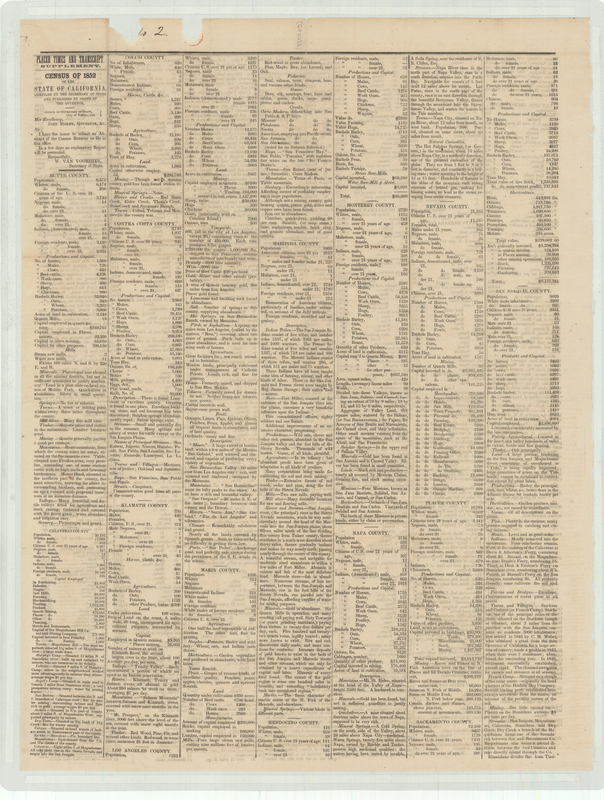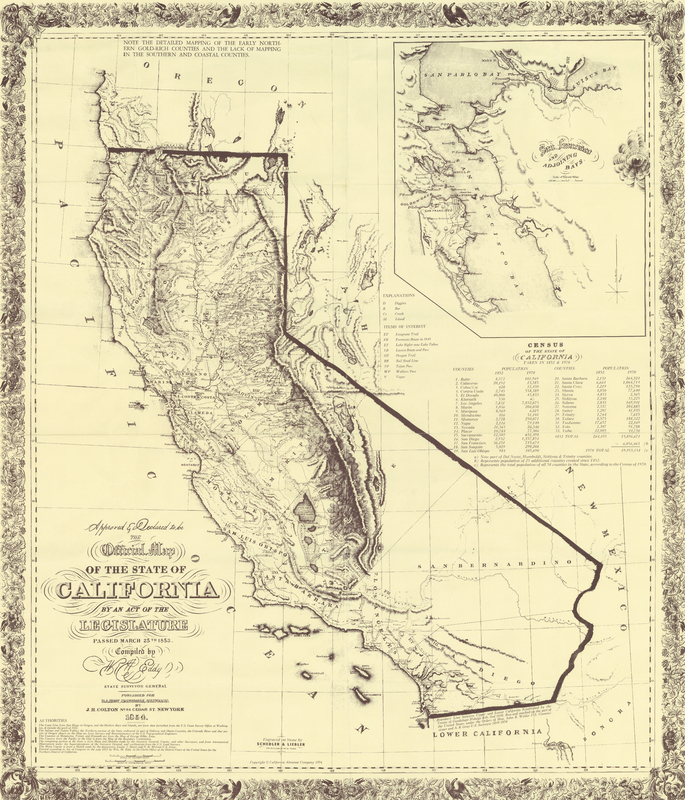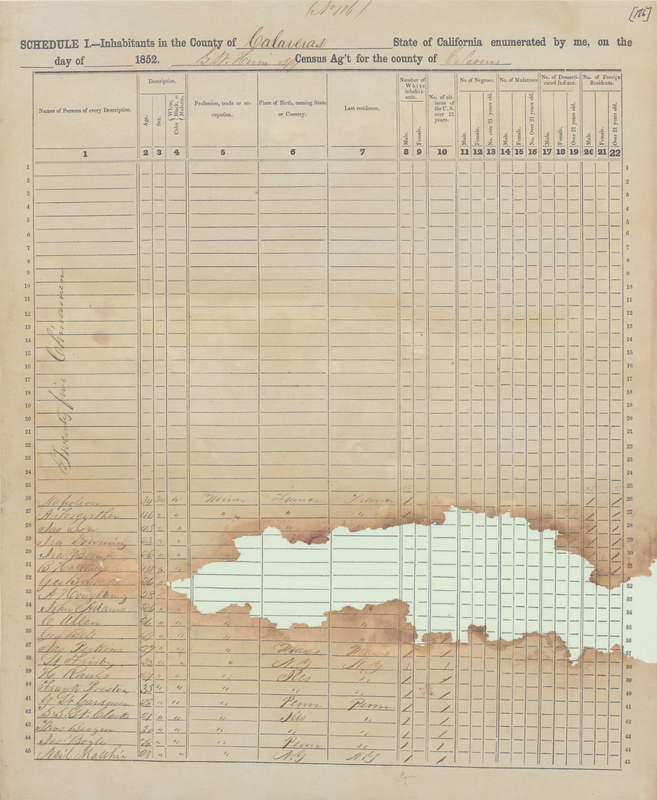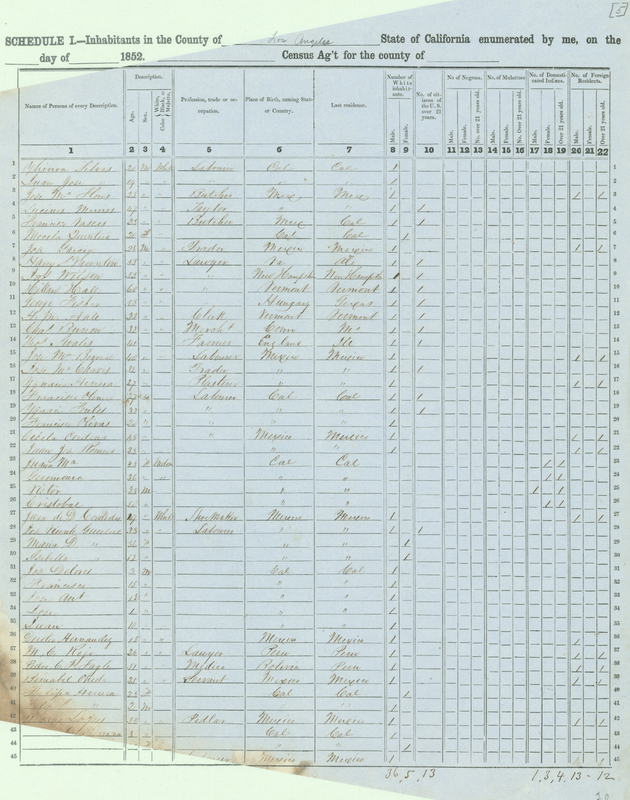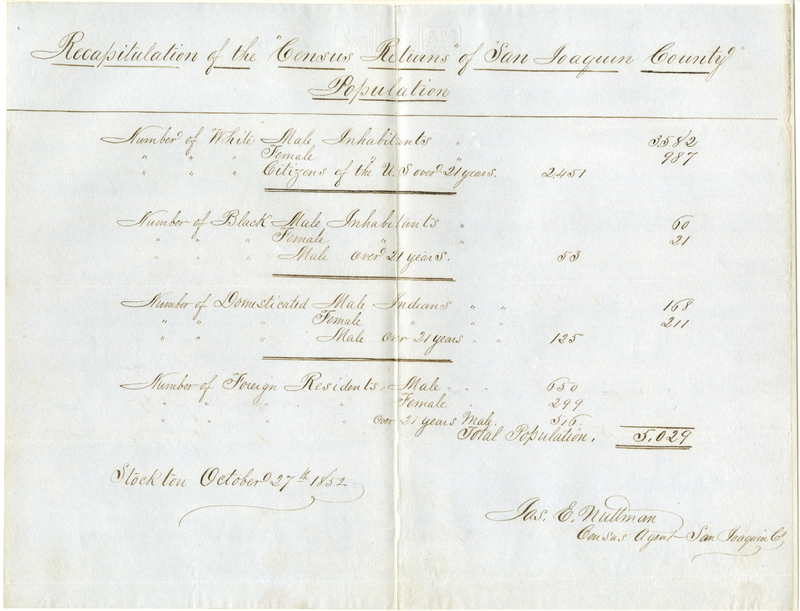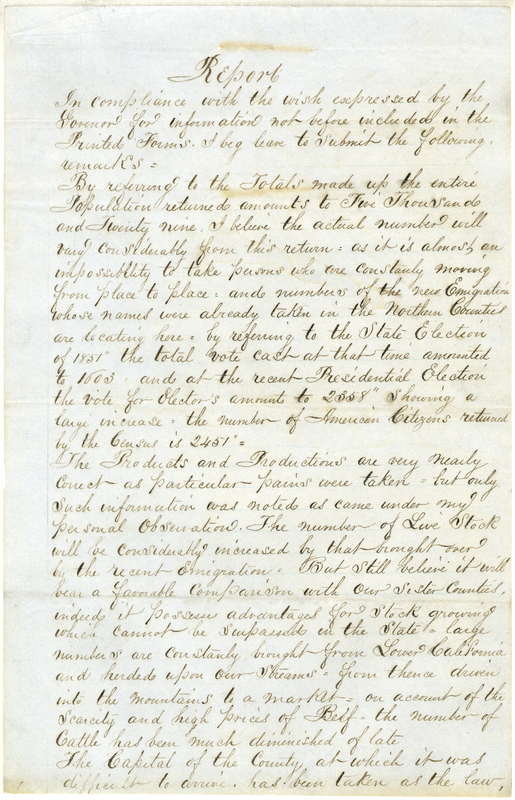Historic Context Continued
Census returns were publicized to Californians through newspapers, and this image displays census data printed in the Placer Times. Notably, it features descriptive information about the major characteristics of the county at that time.
As noted in the newspaper excerpt shown here, in 1852 Monterey County was home to 2,728 residents, most of which were white males. It stretched across 420 acres and was geographically divided by three valleys, San Juan, Salinas, and Carmel. The newspaper entry details Monterey county’s fertile land, ideal for agriculture, horticulture, and cattle ranching.
In 1852, the census played a vital role in determining the future of the state. Foremost, in a representative democracy, the census records the number of inhabitants in different regions. Thus, it helps determine how many representatives should be elected to the California State Assembly to represent their constituents accurately. The state is regionally divided into political districts. The higher the population in the district, the more legislators needed to vote on laws and policies. During this period, only white males over the age of 21 could vote, so only their population totals were used to determine political representation.
This is an official map of California, ratified in 1853 by the state Legislature. This version of the map includes totals from the Census of 1852 and was updated to compare to data collected in the 1970 census. Notably, the total state population is listed as 264,435 which significantly differs from the total population stated in the 1853 “Explanatory Report on the Census Returns” as 303,808.
The Census of 1852 is a product of the 19th century and reflects the values and language of the period. The language used in the census is indicative of the brutal and unjust treatment suffered by African Americans, people of color, and immigrants in California in the 1800s.
Since the beginnings of the Gold Rush, thousands of people from China immigrated to California in search of work and were often assigned dangerous and fatal work in mines and railroad construction. As indicated in this census image from Calaveras County, Chinese immigrants were counted by census county agents; however, often their names were not listed. In many volumes, census county agents wrote notes in the margins listing the number of Chinese people or as seen in this image, they were enumerated as “Chinamen.”
The lack of recorded information speaks to the negative attitude of Californian society towards Chinese immigrants during the 19th century. They were stereotyped as exotic and uncivilized foreigners by mainstream media, such as newspapers that depicted them using derogatory caricatures. Politically, the California State Legislature passed laws targeting Chinese Americans. In 1852, they enacted the Foreign Miner’s Tax that taxed non-U.S. citizen miners, especially Chinese immigrants, who were not allowed to gain citizenship.
In the 21st century, the Census of 1852 can be utilized as a powerful genealogical tool to trace family ancestry. Census research is guided by the name of a 19th century individual and the general region they occupied. The census could potentially provide the researcher with their ancestor’s place of birth, age, offspring, occupation, last place of residence, citizenship status, and nationality.
Article 1, Section 2 of the U.S. Constitution mandates the national government to conduct a census of the nation’s population every ten years and the 2020 Census marked the 24th census. Conducted by a non-partisan government agency, the U.S. Census Bureau, the census includes the 50 states and five U.S. controlled territories. In March of 2020, each household received an invitation to complete the survey that asked for number of inhabitants, type of home, telephone number, names of inhabitants, gender, age, race, and relationship between inhabitants.
Like how census returns were used in 1852, data from the 2020 Census determines number of seats in the House of Representatives and controls how electoral districts are drawn. Additionally, the census informs how billions of dollars of federal funding are allocated and distributed to programs such as education, vehicular infrastructure, and healthcare.
These images are reports that in 1852 county census agents submitted to the office of the California Secretary of State to recapitulate returns from San Juaquin County. The Census of 1852 was the only state census California has conducted and since then, the state has participated in the decennial federal census.
